AI or Die. Build the Machine That Builds Your Agency.
Your Agency Should Run Itself — We Build the Tech-Enabled Machine That Makes It Happen For You
Run an 8-Figure Agency With 50%+ Margins, Higher LTV, and Zero Delivery Headaches
Join 1,000+ agency founders who escaped “agency prison”
AI Will DESTROY 90% of Agencies
“Here’s How to Survive the Next 24 Months.”
The Workflows Agencies Need to Make their Business Run on Autopilot
We are a AI and workflow consulting agency that builds you custom MCP servers, databases, and agentic automations that eliminate inefficiency, double profit margins, and compound scale across every client in our ecosystem. When you work with us, you don’t just get our time — you get every hour we’ve ever invested building the future infrastructure of the marketing industry.
AI agents & workflows execute your strategy consistently, with zero human drift, and at a level your team can’t manually match.
Hit
50–70%
Net margins by replacing people with automated workflows and AI agents.
Eliminate
60%
Delivery headaches - no more human inconsistency, missed details, or operational chaos
Grow
2-5X
Scale workflows, not people & Increase LTV without raising prices or adding headcount.
Remove
30%
Bottlenecks by getting out of operations — step into CEO mode while the machine handles the work.
We’re Don't Build you AI Tool's We Build You a Self-Running Agency
Most agencies try to scale by hiring more people. That leads to chaos, margin loss, and endless oversight.
We make scaling easier, with larger margins and more leverage.
8 Figure Agency builds your AI-powered operating system — a tech-enabled machine that runs delivery, reporting, analysis, QA, project management, and client communication. Imagine a state where:
- Your business stops depending on you.
- Your business stops depending on unreliable humans.
- And you unlock clarity, control, and true freedom.
Trusted by 1,000+ Fast-Growing Agencies
Join the movement. Build an agency that runs without you.
The First AI Development Firm
Built for Agencies.
While others wire together quick automations, we’re architecting infrastructure — custom MCP servers, secure data systems, and agentic workflows tailored to real marketing operations. Each month we invest thousands of hours building custom marketing AI solutions for our clients. Every new solution compounds across our ecosystem, creating a shared network effect no competitor can match.
Proof & Results
Get:
✔ A leaner agency
✔ A more profitable agency
✔ A predictable agency
✔ A self-running agency
✔ More margin, more leverage, more freedom
This is how 7-figure agencies become elite 8-figure companies with fewer people and higher profit.
20–30 h/week
Freed up through automated reporting and quality assurance, translating to an additional $20K–$30K/month in pure margin.
$250K/year
Saved by replacing three strategist roles, allowing for a leaner, more efficient team.
40%
Improved customer retention and lifetime value through our AI delivery engine.
55%
Net margin increased as the agency streamlined from 12 to 5 staff members.
How It Works
8 Figure Agency is engineering the next generation of marketing companies — leaner, faster, and infinitely scalable through AI and operations.
1. AI Infrastructure
First you will get your private AI brain, workflow engine, databases, and agent layer — built for your agency.
2. AI-Powered Delivery Workflows
Then we rebuild your service delivery into automated, high-leverage workflows.
3. Adoption & Integration
Lastly, We integrate everything into your team so your agency becomes permanently self-running.
You’re Not Buying Hours. You’re Joining the Network.
Every agency that joins 8F contributes to and benefits from the collective intelligence of the network.
Each new client expands our shared infrastructure
— meaning your systems evolve faster, your costs drop, and your edge compounds.
You're not buying development time; you're joining a group that is building the world's best marketing agencies
This is how we turn an agency into a machine — one that runs faster, learns faster, and compounds faster
From Chaos to Code
Real Agency Transformations

Lodestone Collective
We helped them cut 45–60 minutes of busywork per week per client within 90 days. This freed their teams to focus on growth instead of admin work and opened the capacity to add 30k MRR.

LandAI
Implemented a live transfer AI call agent to their internal cold calling operation. This made their lead service 80% more efficienct, giving their clients 20 leads from cold calls to close 1 rather than industry average of 100. This will net them millions in ARR.

Ampifyed
Cut content production process down by 5 days per blog in 2 months. This opened up the ability for the team to upsell each client with the potential to add 30-100k/mo in MRR via upsells.
Founder
Jordan Ross — The Architect of the AI Agency Revolution
After consulting over 1,000 agencies, Jordan Ross saw what no one else did — that the next evolution of agency growth would be built on engineering, not headcount. Today, he and the 8F engineering team are building the infrastructure that will define the marketing industry for the next decade.
He’s not preaching AI — he’s operationalizing it.
Start Building Your Machine
AI Systems Buildout
Codify your operations into custom AI workflows and databases.
AI Development Partnership
Hire 8F as your outsourced engineering team for ongoing innovation.
We accept a limited number of partners each quarter to protect quality and speed. First movers win.
AI or Die. Which Side Will You Be On?
The last revolution was digital. This one is AI. Those who build the machine now will own the future of the marketing industry.
Simple animated pulse / data-engine motif.













